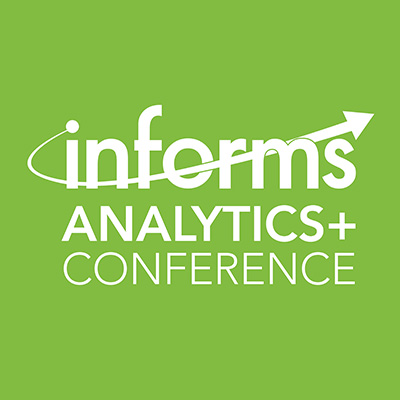Join conference exhibitors as they discuss innovations and best practices in the field. Technology Showcase presentations are educational, feature case studies, and may use exhibitor products and services. Technology Showcases will be presented through the lens of the INFORMS Certified Analytics Professional (CAP) Job Task Analysis (JTA) and how they relate to the 7 Domains of the Analytics Process.
Monday, April 7
9:10-10am
Room 201

‘Optimizing’ Optimization: Generative AI Tools for Beginners and Gurobi Experts
Presented by: Cara Touretzky and Jerry Yurchisin
Generative AI based tools are being positioned to transform the workflows surrounding mathematical optimization. At Gurobi, we want to leverage new opportunities in this space while still honoring the importance of studying and practicing classical model development techniques. Designed with new learners in mind, we’ll walk you through a comprehensive documentation site on using LLMs for modeling and introduce two custom GPT tools—the Prompt Engineer and the Modeling Assistant—that lower the barrier to learning optimization modeling and build your confidence. For those with advanced expertise, we also present Gurobot, a specialized GPT crafted for Gurobi experts to tackle complex optimization challenges. Throughout this discussion we will review model validation strategies, as these are critical for both verifying the usefulness of GenAI tool output and developing skills as a model developer. Whether you’re starting your optimization journey or fine-tuning your skills, discover how these innovative AI resources can streamline your workflow and unlock new levels of efficiency.
The content presented is most relevant to Professional (Mid-Career).
9:10-10am
Room 202
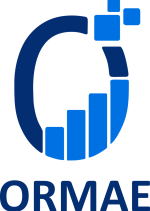
Challenges in Developing a Custom Network Optimization Solution for a Global Supply Chain
Presented by: Amit Garg
Team ORMAE would like to share their experience and lessons learned while building Custom Network Optimization Solution for a Global Supply Chain for a multi-national pharma company. Building custom solution poses unique adoption challenges. We share how ORMAE collaborated with various stakeholders to create right environment and process for the success of the project.
The content presented is most relevant to: Professional (Mid-Career); Executive (Senior Level); and Associate (Early Career).
Quantum Optimization: Applying Quantum Computing to Business Optimization Challenges
Presented by: Catherine Potts
A recent Hyperion Research survey reveals that businesses expect up to 20x return on investment from quantum optimization investments, and over 21% plan production-level use of quantum computing over the next 12-18 months–a 50% increase over the past two years.
Attend this session to learn about quantum optimization, and how these new resources are being used for challenging combinatorial optimization problems such as:
- Optimized workforce scheduling for improved employee experience
- Enhanced production scheduling to improve customer satisfaction
- More efficient and more sustainable logistics routing.
The content presented is most relevant to: Professional (Mid-Career) and Executive (Senior Level).
Integrating Predictive & Prescriptive Analytics in R
Presented by: Matthew Lanham
This tech showcase provides R users and enthusiasts a simple example that clearly demonstrates how to integrate your predictive model(s) into an optimization model. Whether your predictive model is a simple parametric linear or logistic regression or a non-parametric machine learning model, we will highlight important modeling considerations to reduce unintended consequences that could occur from the predictive model uncertainty. The motivation for this workshop is that R continues to be a popular language used by data scientists and analytics professionals. Some professionals might have vast experience in one of prediction or optimization, but little to no experience integrating the two. This example with working code will help you get started off on the right foot.
The content presented is most relevant to Professional (Mid-Career).
11:30am-12:20pm
Room 201
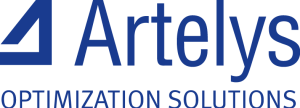
Optimizing Cross-Border Balancing: Artelys’ Optimization Engine for the European Manual Frequency Restoration Reserve Platform
Presented by: Renaud Saltet
Energy supply is a critical economic and societal challenge requiring a continuous balance between supply and demand. To achieve this, energy markets operate across different timeframes, from long-term futures markets to short-term balancing markets. While participants can trade energy up to one hour before delivery, Transmission System Operators (TSOs) manage real-time balancing by activating reserves within seconds to half an hour. In Europe, these reserves were traditionally handled nationally, but the interconnected European power system requires cross-border coordination.
A coupled European market for balancing reserves offers substantial economic benefits. This has led to the development of balancing market through initiatives like MARI, which standardizes the exchange of manual Frequency Restoration Reserves (mFRR) across European TSOs. MARI operates through the Libra platform, a common European system designed to optimize the activation and allocation of balancing energy in real time.
Artelys is contributing to this effort by developing the optimization engine for the Activation Optimization Function (AOF) within MARI, focusing on selecting and allocating mFRR bids efficiently. The algorithms optimize reserve activation across multiple countries, minimizing costs and ensuring grid stability by considering operational constraints and transmission limitations.
The content presented is most relevant to: Professional (Mid-Career) and Executive (Senior Level).
11:30am-12:20pm
Room 202

Generative AI and Mathematical Optimization: A FICO Xpress Tutorial
Presented by: Alkis Vazacopoulos
This tutorial introduces innovative approaches for integrating generative AI with FICO Xpress optimization software. We demonstrate how generative AI can streamline the entire optimization workflow, from model formulation to solution analysis. Participants will learn practical techniques for automated model development, efficient code generation, and intelligent interpretation of solver outputs. Through hands-on examples, we explore how this integration accelerates development time while improving model quality. The tutorial covers key applications in operations research, with particular focus on transforming business problems into mathematical models and interpreting complex solver outputs. This session is designed for both researchers and practitioners interested in enhancing their optimization workflows with AI capabilities.
DecisionOps in the Analytics Process: How to Build, Test, Deploy, and Manage Models Better
Presented by: Carolyn Mooney
Optimization is founded upon the promise of efficiency and improving solutions. While it’s reasonable to believe project success starts and ends with a decision model’s runtime, there are greater efficiency hurdles to be had beyond the Big M or a destroy operator. In today’s analytics environment, the leading teams will be defined by how they apply DecisionOps practices to test, deploy, and operate these solutions alongside software and business stakeholders.
Join this session to learn basic concepts, real-world applications, and how to get started with DecisionOps in Nextmv, a platform for accelerating decision model development. This session is relevant to anyone working with tools such as: OR-Tools, Pyomo, HiGHS, VROOM, Gurobi, AMPL, Hexaly, Jupyter Notebooks, Statsmodels, Prophet, and more.
The content presented is most relevant to: Professional (Mid-Career).
Embracing “Agile for Optimization” to Transform Your Model
Development Process
Presented by: Patricia Randall
Optimization models by their nature present challenges to Agile, and Patricia will present best practices—including decomposing the model, defining “done,” and iterative refinement—to overcome obstacles and achieve outstanding results. In this webinar, you will learn:
- Pros and cons of Agile and Waterfall development
- Challenges in using Agile
- Practices to help you tailor Agile for your optimization solution development
3:40-4:30pm
Room 201

Using Generative AI to Build High Impact Optimization Applications: Cases from Energy, Transportation, Supply Chain, and Finance
Presented by: Bob Fourer and Filipe Brandao
Python and its vast ecosystem are great for data pre-processing, result analysis, and visualization, but Python’s design as a general-purpose programming language makes it less than ideal for expressing the complex optimization problems typical of today’s applications. AMPL is a declarative language that is designed for describing optimization problems and that integrates naturally with Python.
Using recent cases from optimization-intensive application areas, this presentation demonstrates how the combination of AMPL modeling with Python environments and tools has made optimization software more natural to use, faster to run, and easier to integrate with enterprise systems. After a quick introduction to the high-level modeling made possible by AMPL’s new MP solver interfaces, we show how AMPL and Python work together in a range of contexts:
- Installing AMPL and solvers as Python packages
- Importing and exporting data naturally from/to Python data structures such as Pandas dataframes
- Developing AMPL model formulations directly in Jupyter notebooks
- Trying AMPL and open-source solvers for free on Google Colab, with no arbitrary problem size limits
- Turning Python scripts into prescriptive analytics applications in minutes with Pandas, Streamlit, and amplpy
Our cases highlight how generative AI’s broad “knowledge” of Python packages speeds integration with data sources and interactive dashboards, enabling a rapid development process that slashes the time.
The content presented is most relevant to: Associate (Early Career); Professional (Mid-Career); and Executive (Senior Level).
Automatic Branch-cut-price in Hexaly
Presented by: Fred Gardi
Hexaly is a new kind of global optimization solver. Its modeling interface is nonlinear and set-oriented. It also supports user-coded functions, enabling seamless integration of simulation with optimization or machine learning with optimization. The Hexaly API unifies modeling concepts from mixed-integer linear programming, nonlinear programming, and constraint programming. Under the hood, Hexaly combines various exact and heuristic optimization methods to solve users’ problems effectively.
In this talk, we will explain how Hexaly leverages Branch-Cut-Price techniques to automatically solve vehicle routing problems with hundreds of points, achieving near-optimal solutions within minutes on a standard laptop. Here, “automatically” means out-of-the-box: no additional information or parameter tuning is required from the user.
Tuesday, April 8
From Data to Decisions with the Help of Generative AI and Optimization
Presented by: Dinakar Gade and Imre Pólik
You have a team with a great analytics background. They have created advanced analytical tools using Python, R, or your current optimization solver. They managed to derive insights from your data and figured out what the best path forward is. But the tools remain cumbersome to use and are not accessible by business domain experts and business users. It is time to put these critical analytical insights into the hands of the business – with the help LLMs and great optimization technology.
In this tutorial, you’ll learn how FICO’s Xpress Optimization capabilities make it possible to embed your analytic and optimization models within business user-friendly applications. See how to supercharge your models with simulation, fast and robust optimization, reporting, what-if analysis, and agile extensibility for your ever-changing business. We will demonstrate how LLMs can help develop models and configure the solution as well as efficiently guide the business user.
The content presented is most relevant to: Associate (Early Career); Professional (Mid-Career); and Executive (Senior Level).
9:10-10am
Room 202

Kickstart Your Analytics Revolution
Presented by: Cheryl Pammer
Are you ready to lead the charge in transforming your organization? Join us to discover how Minitab can empower you to become the hero of your analytics initiatives.
For over 50 years, Minitab has partnered with professionals like you to drive breakthroughs in product and process improvement. From reducing costs to streamlining efficiency, we’ve helped organizations revolutionize the way they work—and now it’s your turn.
Case studies based on recent experiences will illustrate how others have used the Minitab product suite to:
- Improve healthcare workers’ safety with idea management and brainstorming.
- Tackle food safety and hygiene concerns, resulting in safer products and increased consumer trust using process capability, statistical process control, and predictive analytics.
- Navigate supply chain disruptions, boosting operational efficiency and customer satisfaction using forecasting and automated machine learning.
- Cut product defects, achieving remarkable cost savings and delivering superior quality using automated data collection, machine learning, and operationalizing models.
The content presented is most relevant to Professional (Mid-Career) level attendees.
11:30am-12:20pm
Room 201
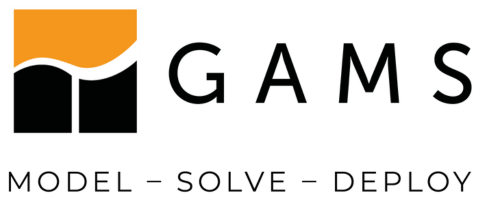
Embedded Machine Learning Models with GAMSPy
Presented by: Adam Christensen and Steven Dirkse
Join us as we showcase the machine learning capabilities of GAMSPy — our new Python-based algebraic modeling language. Embedding ML models into optimization problems is an exciting opportunity to create simplified surrogate models to real-world complex systems. Participants will see examples — inspired by these real world applications — where we train a neural network model, extract the trained/verified system, and embed it into an optimization model written in GAMSPy. Along the way, participants will also get exposed to a range of GAMS data tools that support the entire development — debug — deployment cycle. Throughout the showcase, we will also explore how AMLs — like GAMSPy — lead to clearer code, better maintainability, and learn how GAMSPy overcomes the challenges posted by conventional object-oriented frameworks.
The content presented is most relevant to Professional (Mid-Career); Executive (Senior Level); and Associate (Early Career).
11:30am-12:20pm
Room 202

Building and Evaluating Predictive Models in an Interactive
“No Code” Environment
Presented by: Muralidhara Anandamurthy
Teaching the process of building, evaluating, and choosing statistical models has become a core part of the curriculum for many analytics focused programs. What was once limited to teaching only linear and logistic regression, instructors are now exposing their students to many other modeling techniques – partition/trees, neural network, K-nearest neighbors, support vector machines among many others.
Curriculums are also evolving so that students are given the chance to practice the full predictive modeling workflow on real datasets. This includes such steps as:
- importing, validating, and cleaning the data;
- defining the data to best address specific questions;
- preliminary data exploration;
- building and comparing models;
- presenting results; and
- selecting best model to put into production.
In this showcase, a statistical scientist will illustrate how JMP’s interactive approach to this process can greatly enhance student’s understanding and enjoyment of the model building and selection workflow.
The content presented is most relevant to: Associate (Early Career); Professional (Mid-Career); and Executive (Senior Level).
1:50-2:40pm
Room 201

Seeker – Unlocking a New Value Proposition for Optimization
Presented by: Meinolf Sellmann
Does your management lack trust in optimization? Do operators not accept the plans your team provides in deployment? Do your models not survive long in production? Does it take too long to stand up and iterate on solutions? Do your models lack business impact?
If the answer to any of these questions is yes, then this talk is for you. We introduce the revolutionary new Seeker solver. We walk through several industrial applications that illustrate the incredible opportunities that this new technology offers for optimization experts to create buy-in and increase their business impact.
The content presented is most relevant to: Executive (Senior Level); Professional (Mid-Career); and Associate (Early Career).
1:50-2:40pm
Room 202
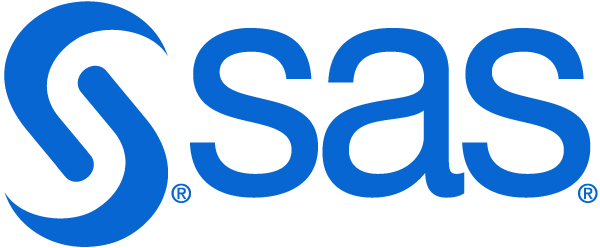
Building and Solving Optimization Models with SAS
Presented by: Rob Pratt
SAS offers extensive analytic capabilities, including machine learning, deep learning, natural language processing, statistical analysis, optimization, and simulation. SAS analytic functionality is also available through the open, cloud-enabled design of SAS® Viya®. You can program in SAS or in other languages – Python, Lua, Java, and R. SAS Analytics is also equipped with AI-enabled automations and modern low-code or no-code user interfaces that democratize data science usage in your organization and offer unparalleled speed to value.
OPTMODEL from SAS provides a powerful and intuitive algebraic optimization modeling language and unified support for building and solving LP, MILP, QP, conic, NLP, constraint programming, network-oriented, and black-box models. This showcase will include an overview of the optimization capabilities and demonstrate recently added features.
The content presented is most relevant to: Associate (Early Career); Professional (Mid-Career); and Executive (Senior Level).
3:40-4:30pm
Room 201
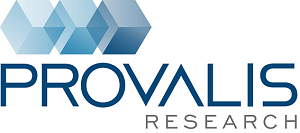
Text Analytics in the GenAI Era: Obsolete or Complementary?
Presented by Normand Peladeau
In the rapidly evolving landscape of data analysis, the rise of generative AI has led many to question the relevance of traditional text analytics techniques. Are these established methods now obsolete, or do they still have a crucial place alongside new AI-driven solutions? This session explores how text analytics and generative AI can coexist, not as competitors but as complementary approaches. We will examine the unique strengths and limitations of both, highlighting how their combination can offer more robust, insightful analyses
